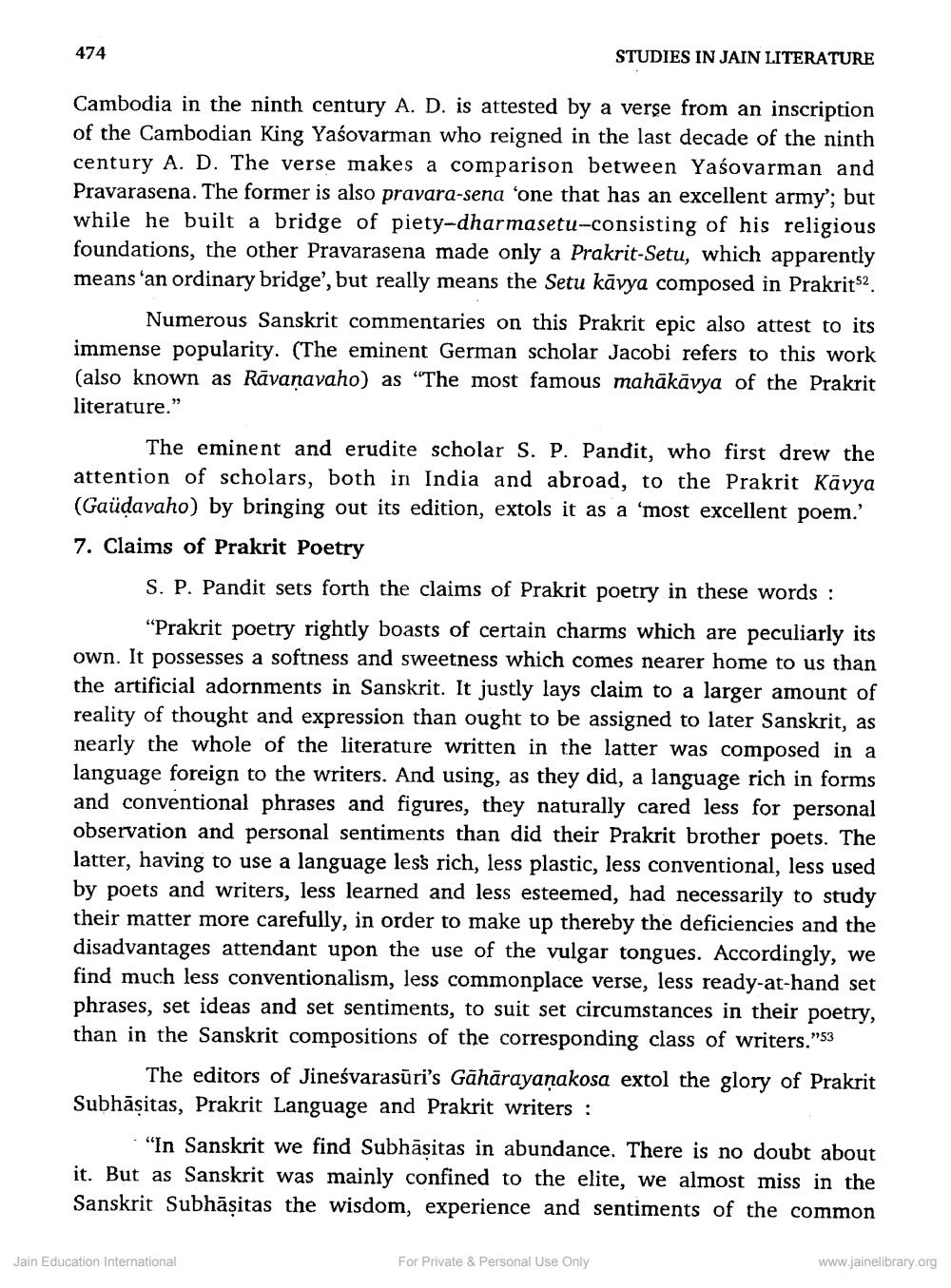________________ 474 STUDIES IN JAIN LITERATURE Cambodia in the ninth century A. D. is attested by a verse from an inscription of the Cambodian King Yasovarman who reigned in the last decade of the ninth century A. D. The verse makes a comparison between Yasovarman and Pravarasena. The former is also pravara-sena 'one that has an excellent army'; but while he built a bridge of piety-dharmasetu-consisting of his religious foundations, the other Pravarasena made only a Prakrit-Setu, which apparently means 'an ordinary bridge', but really means the Setu kavya composed in Prakrit52. Numerous Sanskrit commentaries on this Prakrit epic also attest to its immense popularity. (The eminent German scholar Jacobi refers to this work (also known as Ravanavaho) as "The most famous mahakavya of the Prakrit literature." The eminent and erudite scholar S. P. Pandit, who first drew the attention of scholars, both in India and abroad, to the Prakrit Kavya (Gaudavaho) by bringing out its edition, extols it as a 'most excellent poem.' 7. Claims of Prakrit Poetry S. P. Pandit sets forth the claims of Prakrit poetry in these words : "Prakrit poetry rightly boasts of certain charms which are peculiarly its own. It possesses a softness and sweetness which comes nearer home to us than the artificial adornments in Sanskrit. It justly lays claim to a larger amount of reality of thought and expression than ought to be assigned to later Sanskrit, as nearly the whole of the literature written in the latter was composed in a language foreign to the writers. And using, as they did, a language rich in forms and conventional phrases and figures, they naturally cared less for personal observation and personal sentiments than did their Prakrit brother poets. The latter, having to use a language less rich, less plastic, less conventional, less used by poets and writers, less learned and less esteemed, had necessarily to study their matter more carefully, in order to make up thereby the deficiencies and the disadvantages attendant upon the use of the vulgar tongues. Accordingly, we find much less conventionalism, less commonplace verse, less ready-at-hand set phrases, set ideas and set sentiments, to suit set circumstances in their poetry, than in the Sanskrit compositions of the corresponding class of writers."53 The editors of Jinesvarasuri's Gaharayanakosa extol the glory of Prakrit Subhasitas, Prakrit Language and Prakrit writers : - "In Sanskrit we find Subhasitas in abundance. There is no doubt about it. But as Sanskrit was mainly confined to the elite, we almost miss in the Sanskrit Subhasitas the wisdom, experience and sentiments of the common Jain Education International For Private & Personal Use Only www.jainelibrary.org




